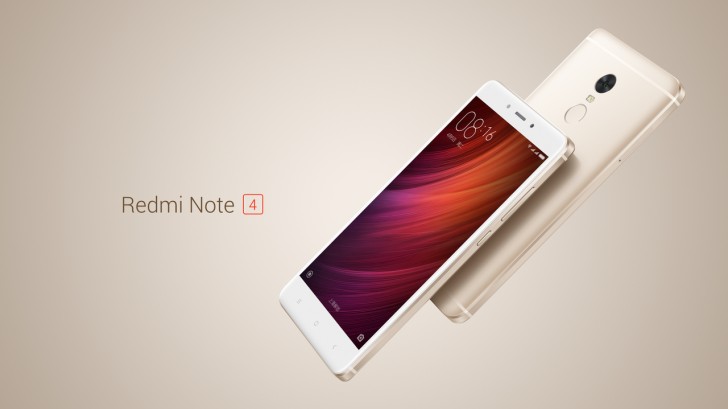Xiaomi pulled the drape off their latest smartphone entitled as Redmi Note 4. Deemed to be the successor of its hugely popular Redmi Note 3, the Redmi Note 4 offers a premium look and impressive specification combined with a budget-friendly price tag.
At first, talking about its design the Redmi Note 4 features metal body similar to its predecessor Redmi Note 3, but now the new phone comes with an added touch of brushed metal and chamfered edges which feel better than ever. However, Xiaomi has kept the design terminology of the Redmi Note 4 quite similar to the Redmi Note 3, which wasn’t bad either.
Coming to the specs, the Redmi Note 4 features a 5.5-inch Full-HD display with a 2.5D curved glass complementing its metal body. Inside, the smartphone is powered by MediaTek’s Helio X20 chipset backed up with 2GB of RAM & 16GB or 3GB of RAM & 32GB of memory, both featuring an option for a microSD card. The whole phone runs on Android 6.0.1 Marshmallow with the new MIUI 8 on top and packs a humongous 4,100mAh battery which should get you a day out.

Taking a look at its camera, the Redmi Note 4 sports a 13MP primary camera with LED flash and a 5MP camera up front for selfies and video chats. Although the Indian version of Redmi Note 3 featured 16MP primary compared to its Chinese counterparts’ 13MP, Xiaomi hasn’t given any hint that if they’ll be practising the same thing with its Indian version of Redmi Note 4.
The Indian version of Redmi Note 3 was one of the best selling smartphones in India as well as Nepal so it won’t be long until we see the Redmi Note 4 in the market of India and Nepal. However, the Indian version of Redmi Note 4 will surely be powered by Qualcomm’s chipset due to the ongoing stress among Xiaomi and Ericsson.
As far as the pricing are concerned, the 2GB RAM and 16GB ROM variant will carry a price tag of $135, whereas the 3GB RAM and 32GB ROM variant will cost you $180. Even though the pricing structure of both variants is impressive, the Redmi Note 4 will surely be priced higher when it officially arrives in the market of Nepal. However, if the company can manage to price the smartphone as lower as possible then there won’t be any doubt about the company catching another success in the mid-range segment.







